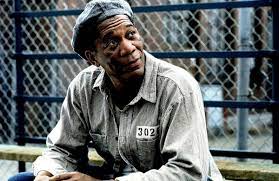Research into Sound
- seaniehannon14
- Jan 21, 2022
- 2 min read
Updated: Jan 23, 2022
Despite the common misconception that film is purely a visual art form, it also relies on sound and sound in the moving image is edited in the same way that images are. Invented in the late 1920s, film-makers and directors were able to add a whole new dimension to their films, film with sound starting its transition to the film we know of today. The different types and techniques of sound include diegetic sound, non-diegetic sound, sound bridges, voice overs, sound motifs, sound layering, sound effects and film scores, to name only a few.
Non-diegetic sound.
Simply put, non-diegetic sound is any sound which does not come directly from the video or the story onscreen. Traditionally, film scores or voice narrations are examples of non-diegetic sound.
- A voice over
The non-diegetic use of a character or omnipresent narrator talking over the visuals of a film or video programme. This can allow the audience to receive an insight into the protagonist's mindset for example.
Morgan Freeman, as "Red", iconically voiced over the classic film "The Shawshank Redemption".
-Music and musical scores
A certain film score can have a very big impact on the feeling in a certain film or programme, enhancing a certain emotion on the screen. Film scores are non-diegetic which means that the characters on screen cannot hear it.

Hans Zimmer, a famous film score composer.
Diegetic sound
The diegetic sound is any sound that originates from the world on the screen. Simply, it is a sound which the characters in the film or the television programme can hear and can include sound effects, the sounds of the background noises and actions of characters.
At first the music being played here is diegetic, the characters being able to hear it too, however, it becomes non-diegetic later in the scene, this is a sound bridge. (Four Lions).
Sound bridge
A transitional device used in film to connect two scenes together through sound. The sound from a previous scene carries over into the opening of the next one. This technique is often used in horror films, where the sound of a scream from the previous scene is carried into the next one.
Sound Motifs
Often used for conditioning the audience emotionally for actions of a particular character, a sound motif is a sound effect that is associated with a situation or idea in a film.
Sound layering
When sound is layered and edited to create effects and have a polyphonic texture.
Contrapuntal sound
Music that has an emotion does reflect the real emotions on screen, in the characters. This technique is often used to create a sense of unease in the audience. For example, this is often used in horror films; upbeat music being played over a murder of a scary scene for example.
Ambient Sound
Means the background noise, commonly wind, water, birds, crowds, office noises, traffic. Support the maintaining of visual reality and are mixed to prioritise dialogue.
Foley Sound
Word used to describe replacement sounds recorded in post production, often enhancing or replacing an original sound. For example if a sound was not loud enough, they might recreate the sound.
Foley artists usually use everyday objects to create realistic sound effects in film.
Wild track
Without any accompanying film footage being shot, this is sound that is recorded during a film shoot, but separately from the main production audio.







Comments